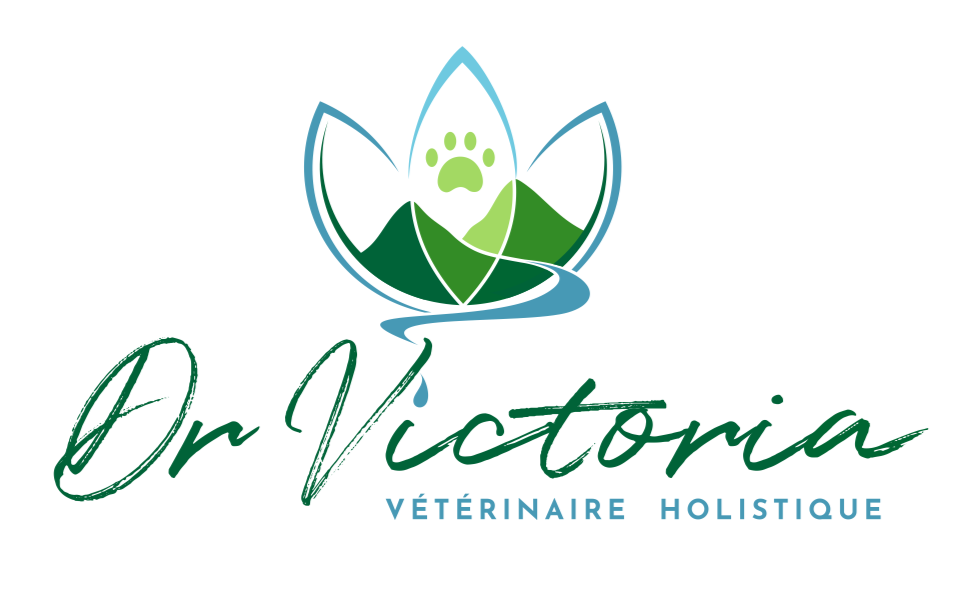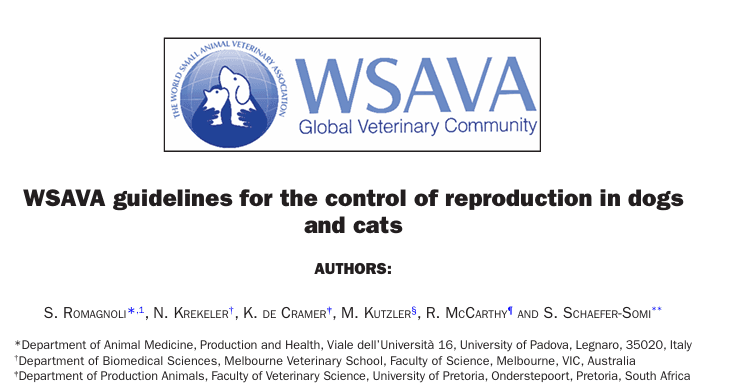As a veterinarian, it’s crucial to stay up-to-date with the latest research and recommendations to provide the best care for our patients. In June 2024, the World Small Animal Veterinary Association (WASAVA) published a dossier on spaying and neutering dogs, providing new perspectives on this common practice. This article explores these recommendations, highlights the potential risks associated with these procedures, and discusses the alternatives available to mitigate them.
WASAVA recommendations
WASAVA emphasizes that spaying and neutering should be considered on a case-by-case basis, rather than as a systematic procedure for all dogs. This individualized approach takes into account many factors, including the dog’s age, breed, lifestyle and general health. The aim is to maximize the benefits for each animal while minimizing the potential risks.
Definitions
Gonadectomy: removal of the genital glands that produce gametes and sex hormones; in females, the ovaries; in males, the testes.
Sterilization : removal of the ability to procreate; applies to both males and females; does not necessarily require castration.
Castration : removal or destruction of an organ necessary for reproduction (ovaries or testes).
What are the risks associated with spaying and neutering?
- Orthopedic problems
Hip and elbow dysplasia: Studies show a correlation between early gonadectomy and an increased incidence of hip and elbow dysplasia, especially in large breeds.
Rupture of the anterior cruciate ligament (ACL): Castration, especially if carried out early (i.e. before the end of growth), can also increase the risk of rupture of the anterior cruciate ligament (ACL), a serious injury often requiring costly surgery.
- Cancer
Hemangioendothelial sarcoma: Certain breeds, such as Golden Retrievers, Labrador Retrievers and German Shepherds, have an increased risk of developing this type of cancer after castration.
Lymphoma: There is a link between castration and a higher incidence of lymphoma in certain breeds, notably Boxers, Rottweilers and Scottish Terriers.
Osteosarcoma: This bone cancer is more common in large breeds castrated early, such as Great Danes, Leonbergers and Rottweilers.
Mastocytoma: Some studies suggest that castration may increase the risk of mastocytoma in certain breeds, notably Labradors and Golden Retrievers.
Prostate cancer: in males, although castration reduces the risk of benign prostatic hypertrophy, it appears to slightly increase the risk of prostate cancer.
- Behavioral disorders
Aggression and reactivity: Contrary to popular belief, castration does not reduce aggression or reactivity. It only eliminates behaviors linked to reproduction.
Brain changes: The absence of sex hormones has been shown to result in neurological changes. Gonadectomy can increase fearful, aggressive and reactive behavior.
Anxiety and fear: some neutered dogs show increased anxiety and fear behavior.
- Male prostate problems
Hypertrophy: After castration, some males may develop an enlarged prostate, which can sometimes lead to urinary problems such as difficulty in urinating.
A slight increase in the risk of prostate cancer is observed in neutered dogs.
- Urinary problems
Urinary incontinence: Much more common in females, urinary incontinence can affect dogs following castration or oophorectomy. According to some studies, one in five bitches will develop urinary incontinence after castration, with the risk increasing with the dog’s age. This can have a significant impact on the dog’s quality of life, as well as that of his family.
Urinary tract infections: Dogs may be more prone to urinary tract infections due to hormonal changes affecting immune response (in females) or changes in urine concentration (in males).
Cystitis: Inflammation of the bladder (cystitis) can occur in neutered bitches.
- Obesity
Obesity is a common problem in neutered dogs. Contributing factors include:
Modification of basal metabolism: reduced metabolism and need for fewer calories to maintain a stable body weight.
Changes in body composition: hormonal changes can lead to weight gain, particularly an increase in body fat.
Changes in feeding behaviour: an increase in appetite or a tendency to eat more are observed in some dogs.
Activity: it’s important not to reduce activity levels after castration, as this can contribute to a positive energy balance and weight gain.
- Other associated illnesses
Gonadectomy is also associated with an increased risk of certain metabolic and immune diseases:
- Diabetes: An increased predisposition to diabetes has been observed in some sterilized dogs, possibly linked to hormonal changes.
- Hypothyroidism: The absence of sex hormones can influence thyroid metabolism, increasing the risk of hypothyroidism.
- Allergies: Studies suggest that castration can affect the immune response and promote the onset of allergies.
- Autoimmune diseases: Certain autoimmune diseases, such as polyarthritis or autoimmune dermatitis, may be more common in sterilized dogs.
Conclusion
Personally, I take the position that a healthy dog or bitch should not be neutered if the person can be shown to be responsible (“RPO” according to the WSAVA – Responsible Pet Owner).
Today, we must seriously question the ethics of this practice. In Scandinavia, castration is considered unethical and is only carried out for proven medical reasons. It is essential to ask why such an approach has been adopted, and what lessons we can learn to improve the welfare of our animals.
The advantages of sterilization, with or without gonadectomy
Population control
Historically, spaying and neutering were carried out mainly to control the animal population and prevent unwanted litters. These interventions helped limit the proliferation of stray dogs and reduce abandonment. Today, they remain an effective management tool, although more and more thought is being given to their long-term implications for animal health.
Reduced risk of reproductive diseases
Gonadectomy considerably reduces the risk of developing reproductive diseases such as uterine infections (pyometra in females) and certain infectious diseases in breeding stock.
Reducing undesirable behavior
In males, castration can reduce flight in search of mates.
In females, sterilization can prevent heat-related behaviors such as restlessness, escape attempts and excessive vocalizations, as well as nervous pregnancies.
Reducing the risk of certain hormone-dependent cancers
Removal of the ovaries or testicles eliminates the risk of developing ovarian or testicular cancer. Sterilization can, in some cases, reduce the risk of mammary tumors; however, to benefit from risk reduction, oophorectomy must be performed before the first heat, which implies very early intervention and increases the risks mentioned above (orthopedic, behavioral and metabolic).
Sterilization techniques for bitches
However, if you’re thinking of sterilizing your dog, it’s essential to understand the different techniques available and their advantages and disadvantages. Each method has specific implications in terms of health, well-being and managing the risks associated with gonadectomy. It’s important to note that spaying and neutering during growth is counterproductive, as it can exacerbate some of the risks discussed above, including orthopedic, metabolic and behavioral risks.
Ovariectomy vs Ovariohysterectomy vs Hysterectomy for bitches
The decision between oophorectomy (removal of the ovaries) and ovariohysterectomy (removal of the ovaries and uterus) or hysterectomy (removal of the uterus only) requires careful consideration:
Ovariectomy
This procedure removes only the ovaries, stopping the production of sex hormones. It is less invasive, but may increase the risk of cancers such as hemangioendothelial sarcoma and urinary incontinence due to the drop in estrogen.
Ovariohysterectomy
This procedure removes both the ovaries and the uterus, eliminating the risk of pyometra. The hormonal implications are similar to those of oophorectomy, with increased risks of certain cancers and orthopedic disorders.
Hysterectomy (Ovary-Sparing Spay)
Hysterectomy involves removing the uterus while leaving one or both ovaries intact. This maintains natural hormone production, reducing the risks associated with hormone suppression while eliminating the risk of pyometra.
Other alternatives to dog castration
To mitigate the risks associated with hormone suppression, several alternatives to gonadectomy are available:
Vasectomy for males
A vasectomy cuts the vas deferens, rendering the male sterile while retaining hormone production. This allows population control without affecting sex hormone levels, thus reducing orthopedic and cancer risks.
Chemical and timed castration
Using non-permanent methods such as injections or implants to temporarily reduce fertility allows you to observe the effects before making a permanent decision.
Reproductive Management
In all cases, whether the animal is whole, vasectomized or hysterectomized, strict reproductive management, such as monitoring heat cycles and preventing accidental mating, can be a viable alternative to sterilization.
Conclusion
Spaying and neutering dogs remain important interventions in dog population management and disease prevention. However, the new WASAVA recommendations remind us of the importance of a personalized, informed approach. By carefully weighing up the risks and benefits for each individual animal, and considering the alternatives available, we can better serve our canine patients and their owners. The solution does not lie in gonadectomizing all dogs.
As veterinarians and pet owners, we must continue to educate ourselves and adapt our practices to reflect the latest research and recommendations. This is how we can ensure the optimal health and well-being of our four-legged companions.




